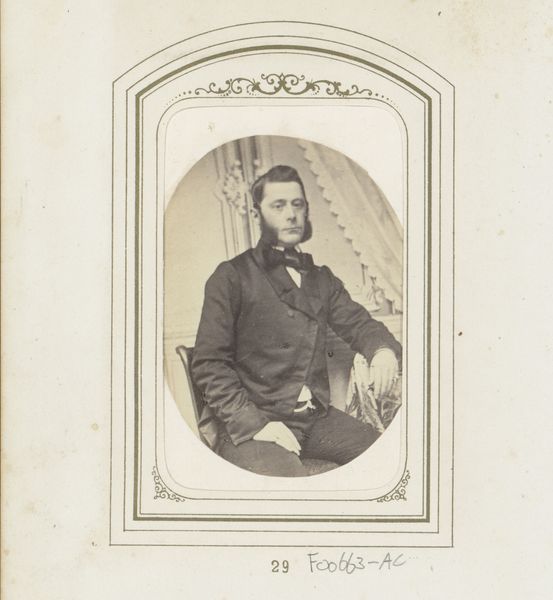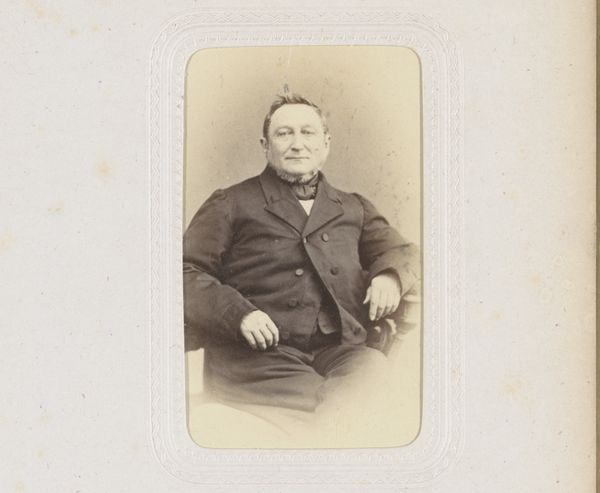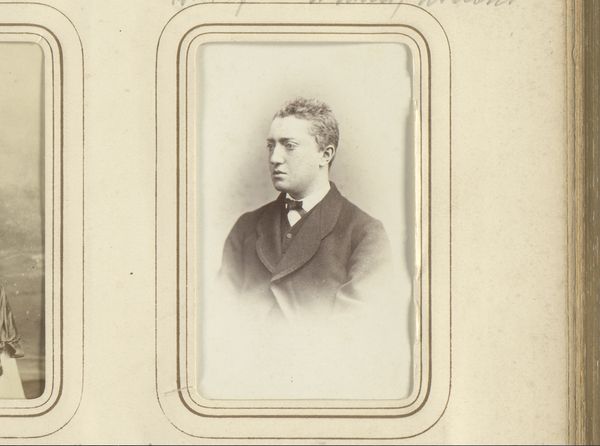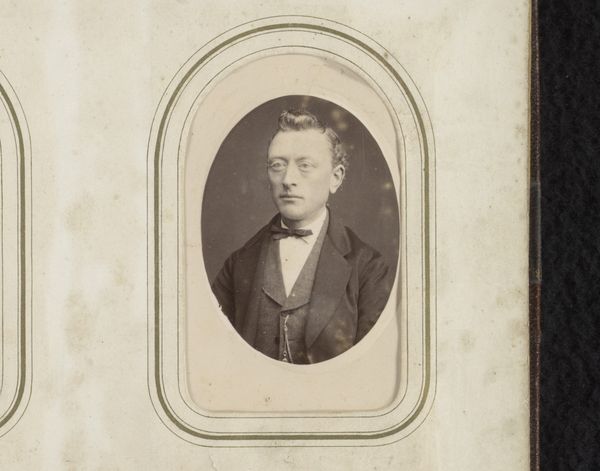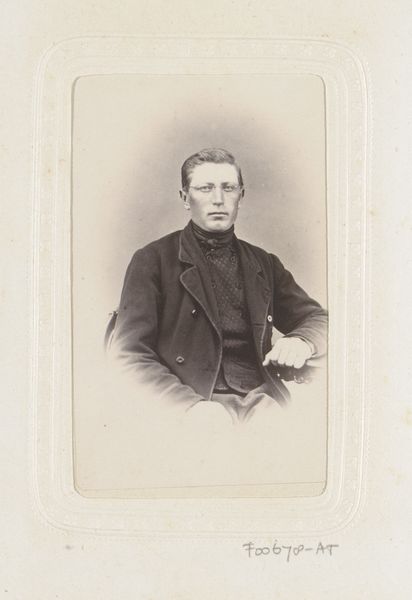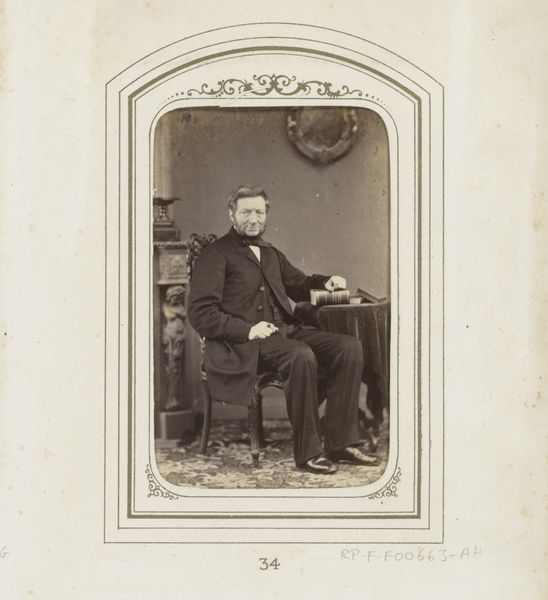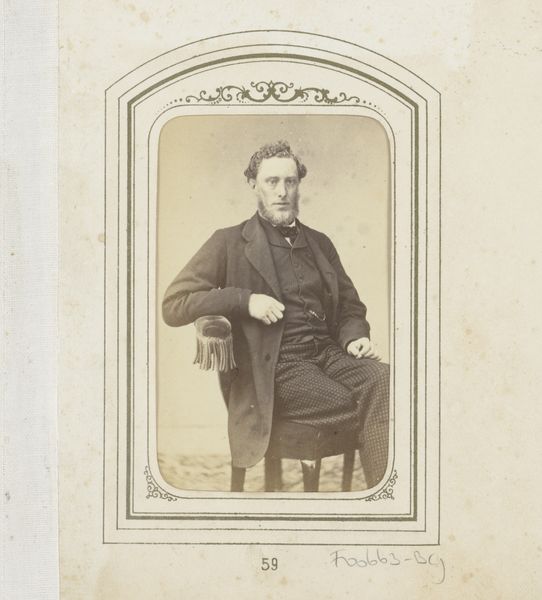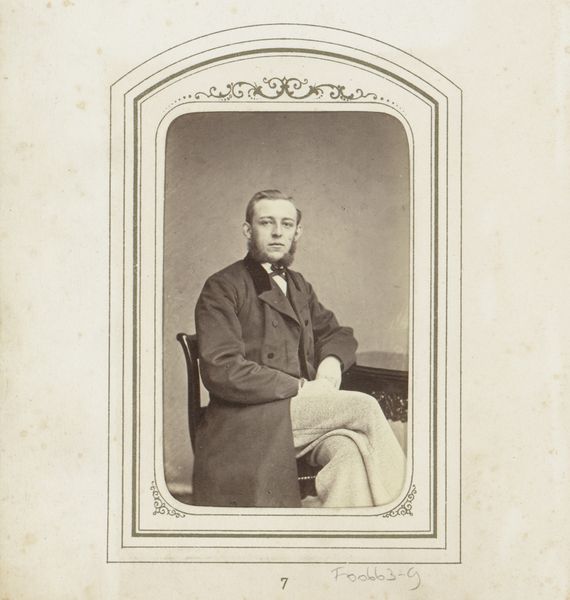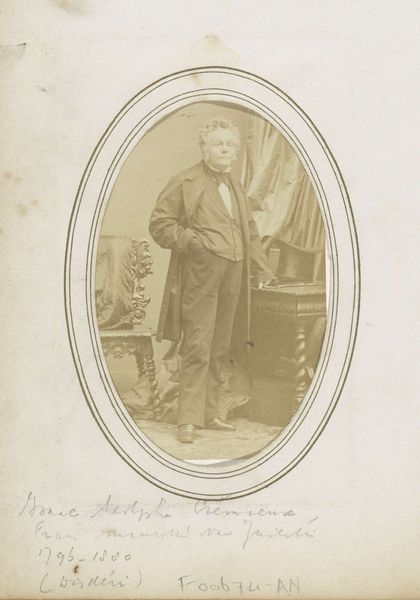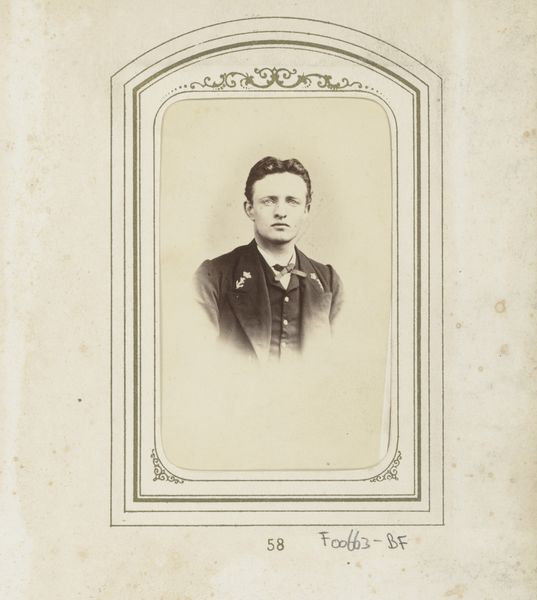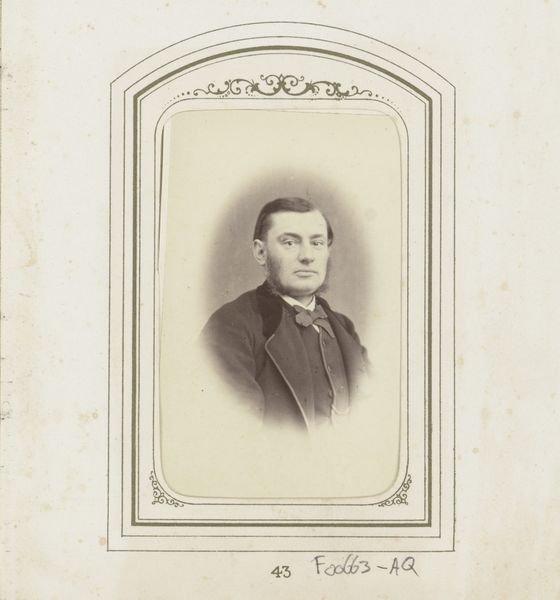
photography, gelatin-silver-print
#
photography
#
historical photography
#
gelatin-silver-print
#
19th century
Dimensions: height 85 mm, width 53 mm
Copyright: Rijks Museum: Open Domain
Editor: This is Maurits Verveer’s “Portret van een zittende man,” made sometime between 1861 and 1883. It’s a gelatin silver print currently housed at the Rijksmuseum. I'm struck by the formality of it – how posed and proper everything is. What do you see when you look at this piece? Curator: I see a direct product of its time. Consider the socio-economic factors: photography, particularly portraiture, became more accessible but was still a carefully constructed commodity. It wasn't the casual snapshot of today. Editor: Right, this wasn’t something everyone could do themselves. Curator: Exactly. Think about the labor involved: the photographer’s skill, the chemicals used to develop the print, the specialized paper itself. What does this photograph communicate about class and consumption in the mid-19th century? Editor: Well, the man’s clothing—his suit, the tie—they suggest a certain level of financial comfort and social standing. To be able to afford a photographic portrait meant you were part of a privileged segment of society. Curator: And what about the gelatin-silver print itself? The materiality – how does the smooth surface of the image play into the experience, compared, say, to an earlier photographic process like a daguerreotype? Editor: I see your point; there's a mass-producible aspect to gelatin silver prints that daguerreotypes didn't have. It democratizes portraiture slightly but still preserves a level of artifice. Curator: It shifts the value. Labor has evolved into technology in a consumable market, and a desire to be "remembered" drives up revenue in the artist's favor. A very profitable cycle of creation, I would say. Editor: That's given me a lot to think about. I came in seeing a formal portrait but now I see it as part of a complex system of production and social aspiration. Thanks for making it so clear. Curator: Indeed, it's all about what goes into its making that determines its place in history. A pleasure.
Comments
No comments
Be the first to comment and join the conversation on the ultimate creative platform.
